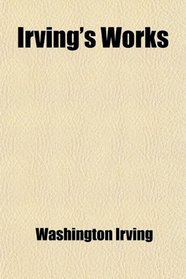Search -
Irving's Works
Irving's Works
Author:
Purchase of this book includes free trial access to www.million-books.com where you can read more than a million books for free. This is an OCR edition with typos. Excerpt from book: CHAPTER H. KIBCOKDUCT OF DON PEDRO MAROARITE, AMD HIS DEPARTURE FROM THE ISLAND. [1494.] T will be recollected, that before departing on his voyage, ... more »
Author:
Purchase of this book includes free trial access to www.million-books.com where you can read more than a million books for free. This is an OCR edition with typos. Excerpt from book: CHAPTER H. KIBCOKDUCT OF DON PEDRO MAROARITE, AMD HIS DEPARTURE FROM THE ISLAND. [1494.] T will be recollected, that before departing on his voyage, ... more »
ISBN-13: 9781459088931
ISBN-10: 145908893X
Publication Date: 8/6/2009
Pages: 336
Rating: ?
ISBN-10: 145908893X
Publication Date: 8/6/2009
Pages: 336
Rating: ?
0 stars, based on 0 rating




